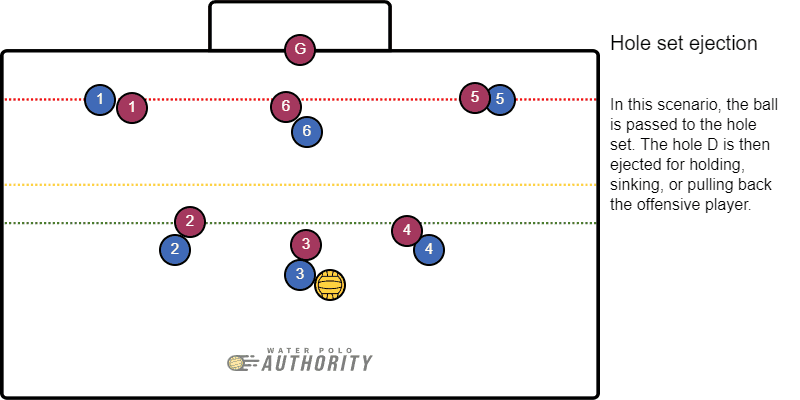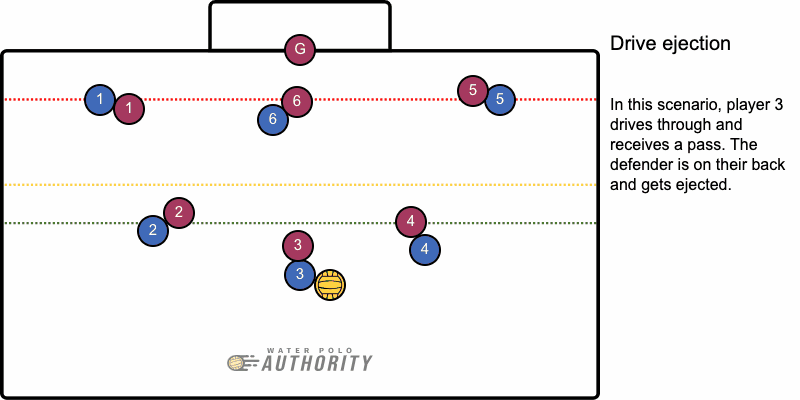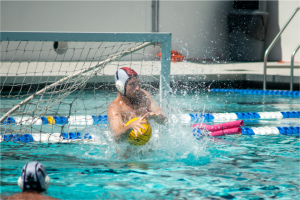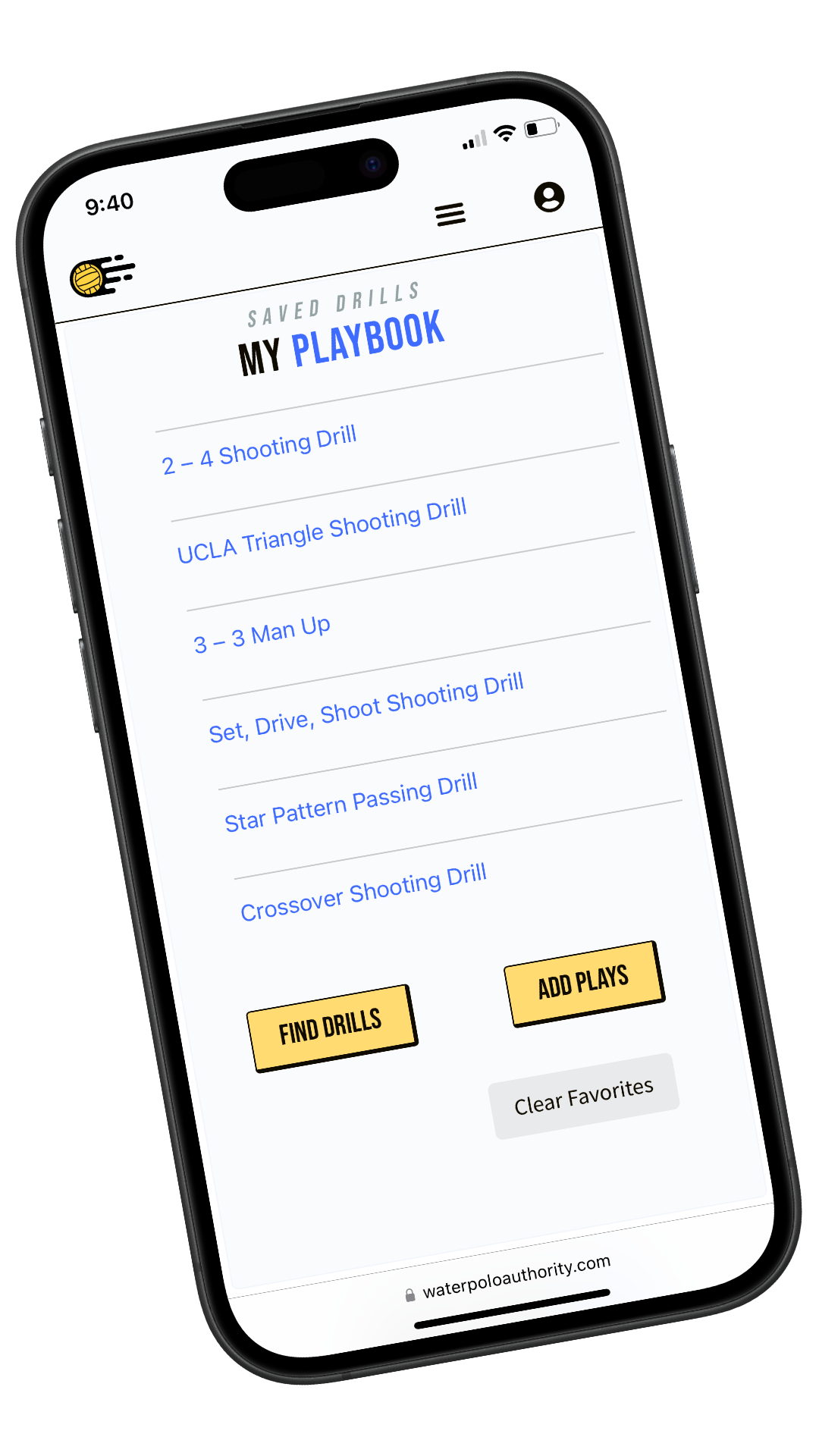What Is a Power Play in Water Polo?
When a water polo player commits a major foul, they are ejected from the game for 20 seconds. This situation gives the other team an extra player, creating a power play opportunity.
Each player is allowed a maximum of 3 ejections per game. After the third ejection, the player is out for the remainder of the game.
Power plays, more commonly referred to as ‘man up’ or ‘6 on 5’ by water polo players and coaches, create a prime goal-scoring opportunity for the offense since there’s one less defender to guard them.
What’s covered in this article:
- Earning Ejections
- Man Up Offense
- Man Down Defense
Water Polo Power Play Details
Earning An Ejection
Players are most commonly ejected for holding another player down or pulling another player from behind. The center defense (hole D) position is most frequently kicked out, as the hole set fights for position in front of the goal. Other exclusions can be called for over aggressive play like kicking or hitting another player’s face.

In this scenario, the ball is passed to the hole set (blue 6). The hole D (red 6) is then ejected for holding, sinking, or pulling back the offensive player.

In this scenario, player 3 drives through and receives a pass. The defender is on their back, pulls back the offensive player, and gets ejected.
Power Play Offense, Man Up

When the defensive player is ejected they must swim to the designated ejection area in the corner for 20 seconds. During this time the players on offense typically take advantage of the extra player by shifting to a 6 on 5 configuration.
The most common power play setup for an offense is called a ‘4-2’ (four two), meaning four players are lined up along the red 2M line and two players are lined up on the green 6M line. The graphic above shows a 4-2 configuration during a man-up situation. A less common offensive setup during a power play is called a ‘3-3’ (three three), where three players line up on the 2M line and three players line up on the 6M line.
Common Offensive Plays
Breaking the 2M on Offense
The new rule redefines the offsides area as a boxed zone in front of the goal, rather than stretching the 2-meter area across the entire pool width.
Now players can move closer to the goal line without the ball while outside the box, creating more scoring opportunities for the offense.
Power Play Defense, Man Down
With one less player, the defense on a power play down typically shifts to a zone. Players are responsible for defending an area, moving back and forth between two players. It’s important that all players shot block to make it as difficult as possible for the offense to take a straight shot on goal.
After 20 seconds, the excluded player returns to the field of play. Players will often shout “even” to communicate that the power play has ended and the defense should shift away from the zone.



